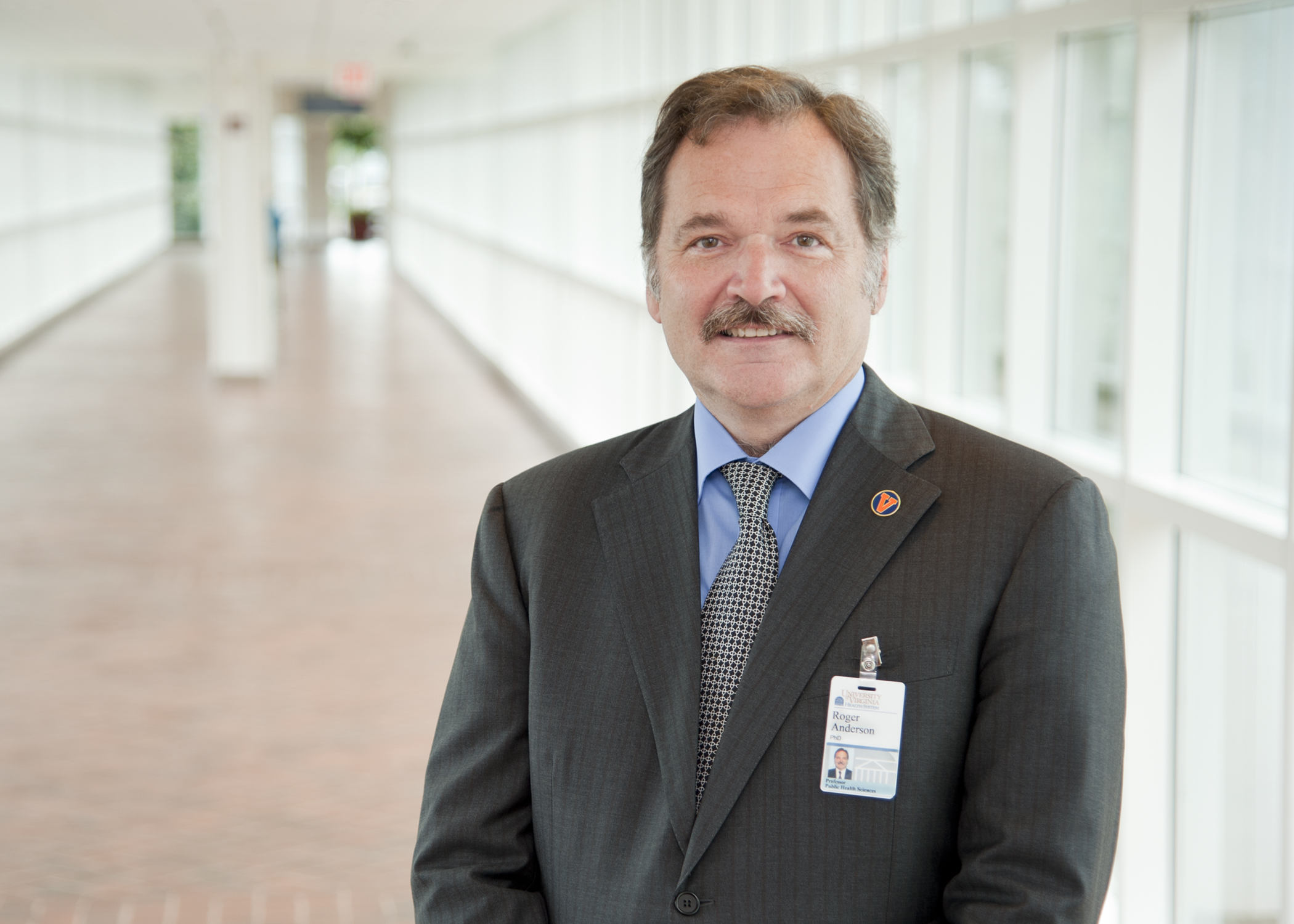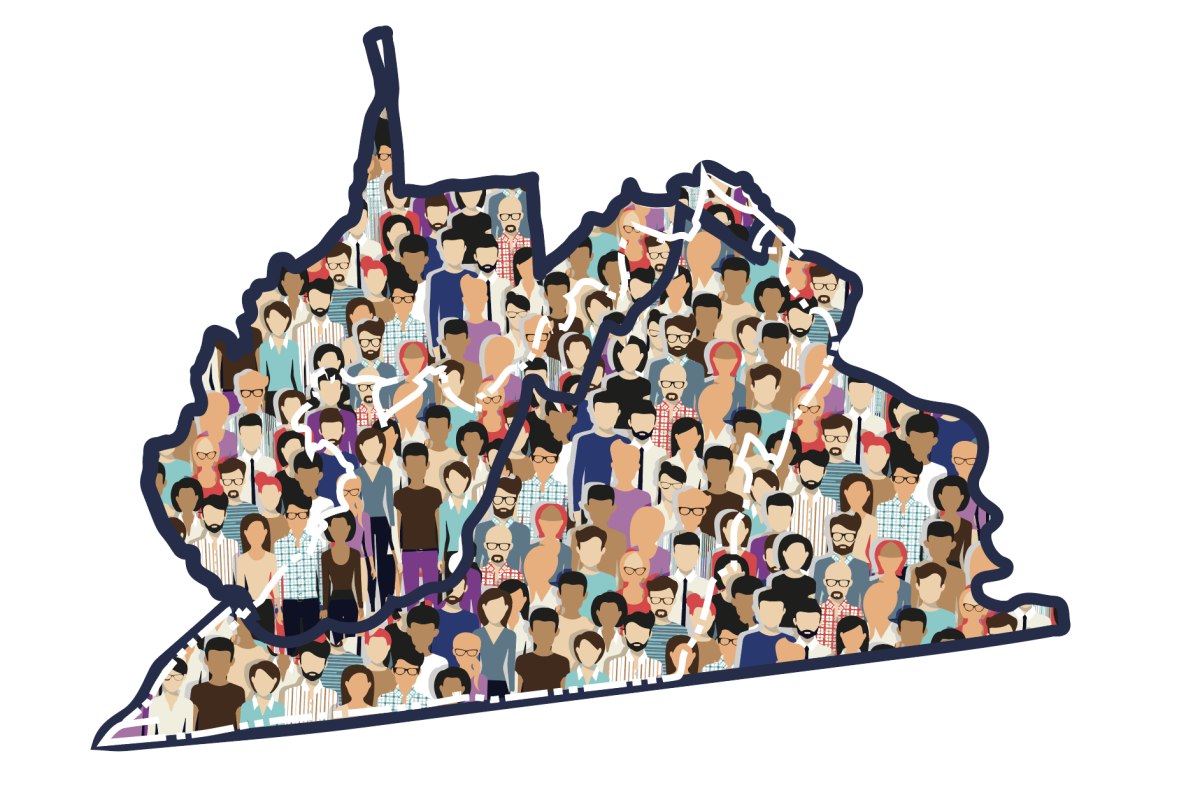An Ounce of Cancer Prevention…
Many think of a cancer center as a team of oncologists, nurses, and healthcare providers attending to patients. Others think of scientists in a laboratory investigating cancer cells under a microscope or testing the next breakthrough therapy. But that, says Dr. Roger Anderson, is just “the tip of the iceberg” at UVA, which was recently designated a “comprehensive cancer center” by the National Cancer Institute (NCI) and where the battle to prevent, control, and ultimately defeat cancer is a community-wide initiative.
As UVA Cancer Center’s Associate Director, Population Sciences, Anderson oversees the study of cancer in our regional populations and how to modify cancer risks across individuals and settings to provide optimal care to cancer patients across our entire community. The American Cancer Society (ACS) recently named Anderson its 2021 Researcher of the Year—a national award that annually recognizes one ACS grant recipient for remarkable advances in cancer research innovation and leadership. In this case, the committee acknowledged Anderson’s work in rural Appalachia and his efforts to increase the quality of life, access to care, and survival rates of underserved populations in the region. A primary focus of Anderson’s research has been breast health equity through investigations of breast cancer screening policies and practices at mammography sites.
It was early 2014 when then newly-appointed UVA Cancer Center Director Dr. Thomas Loughran offered Anderson what he calls a “once-in-a-lifetime opportunity” to establish a Cancer Prevention and Control program at UVA. Anderson, a professor of public health sciences, was at Penn State at the time, engaged in cancer-related population research of northern counties in rural Appalachia.
“While there was already impressive cancer prevention and control research here,” says Anderson, “it wasn’t organized as a formal program or mission directed, and there were only a handful of scientists with this focus.”
UVA Cancer Center’s Cancer Prevention and Population Health program has since grown to include more than 26 faculty and researchers from a variety of UVA departments and health disciplines. Anderson says their work and expertise are critical to the center’s priorities of reducing cancer incidence and mortality from lung, colorectal, cervical, breast, and skin cancers. In addition to meeting rigorous standards for basic science and clinical research, developing a deep and broad population science program was vital to UVA’s receiving the NCI’s “comprehensive cancer center” designation in 2021.
“Across UVA Cancer Center, we are looking for ways to stop cancer in its tracks—hopefully by preventing it at the population level, in communities, by finding it early when treatments are most effective, and by curing cancer and helping patients maintain survival and quality of life with cancer as long as possible,” says Anderson.

In this Q&A, we asked Anderson to tell us more about the role of population science in UVA Cancer Center’s multi-pronged mission, the cancer disparities he’s identified in our region, and his reaction to being named ACS’s Researcher of the Year.
Q. What is your primary responsibility as the Cancer Center’s Associate Director, Population Science?
A. My role is to look across the Cancer Center’s many research programs and initiatives, including training, to identify opportunities and gaps in knowledge that could reduce the burden of cancer on our patients and communities. For example, at the patient level, we are interested in understanding, through hypothesis-driven research, how to improve their experience with cancer care. This includes managing their psychological distress, optimally monitoring treatment toxicities to lengthen active therapy and potentially survival, and supporting patient adherence to medications that help prevent a recurrence. At the population level, we are interested in improving access to cancer screening, promoting healthy behaviors to break the link between poverty and cancer, and improving access to support for cancer survivorship.
Q. What are some examples of your team’s research findings?
A. One of the first things my team did when I arrived at UVA was to define our service area. Who do we serve? What communities rely on us for health care? Where do we have an influence? While we have influence across the entire state, our core service area was in at least 87 counties—from northern VA down to the state lines of NC, TN, and KY. With this knowledge, we produced statistical reports on cancer incidence and mortality by county and region. We looked at the rates of late-stage cancers to see where we could be more effective. We looked at cancer risk and obesity to see where we could have a positive impact through research. We let cancer reveal itself and show us where it had gained the upper hand in our service area—where it was in excess.
One pattern we found was that lung and colorectal cancers and melanomas were particularly high in many of our rural areas. Later-stage cancers were more likely to occur in lower-income areas lacking adequate access to screening. We also found well-documented patterns that we expected to find, such as higher prostate cancer in communities with a larger black population versus white.
Q. Have you identified any root causes of cancer-related disparities in our region?
A. The root causes are complex and often multiple, but they are modifiable. The complexity can be illustrated by the higher rates of colorectal cancer deaths in the central and southern counties below Albemarle. The excess risk for obesity coupled with prevalent smoking and poorer access to primary care in this area may mean that nothing is in place to stop the progression of this generally slow-growing cancer. Some patients referred for cancer screening, such as a FIT test, might not return the test to the lab on time. If it is produced and positive, they may have difficulty getting in to see a gastroenterologist.
Q. What is UVA Cancer Center doing to address some of the disparities revealed in our community?
A. Our Cancer Center created a Community Engagement and Outreach (COE) Program, led by Dr. Wendy Cohn in Public Health Sciences, to more effectively engage the communities that we serve and work in tandem with our researchers. So this is another important advance to ensure what we do is informed by input from community stakeholders—to help ensure our success.
We have a great team of scientists. Some examples that illustrate the breadth of our research and related efforts include:
- Reducing caloric intake from sugar-sweetened beverages in children, adolescents, and adults in rural regions where there is high obesity—a critical cancer risk factor.
- Promoting smoking cessation in women at high risk for cervical cancer and, more broadly, in areas where smoking is the highest.
- Adapting evidence-based approaches to increase colorectal cancer screening and follow-through in high-need communities.
- Reaching both Black and white men in Virginia diagnosed with prostate cancer to support their treatment decisions and options for care.
- Reducing psychological distress in cancer patients using digital or e-health approaches.
- Supporting medication adherence in women treated for breast cancer to prevent recurrence.
- Creating quality guidelines for metastatic brain cancer so that all patients receive coordinated care and promptly-timed palliative care.
To learn more about UVA Cancer Center's efforts to improve cancer prevention and health equity locally and across the region, see "UVA Cancer Center Takes Action Against Cancer Disparities" in this issue of Investing in Hope.
Q. A lot of the population science we see published is funded by grants, but what role does philanthropy play in UVA Cancer Center’s efforts to prevent and control cancer in our region—particularly among our most vulnerable populations?
A. The role of philanthropy is crucial to the Cancer Prevention and Population Health program at UVA Cancer Center. Although the NCI is a primary funding source for much of our research, private support allows us to focus on specific areas of interest and particular populations in Virginia. Also, the pay line of grants at the NCI is low—only 10% of studies are awarded. At the end of every grant review cycle, a lot of good science is left on the table. Donors who step in to select high-quality proposals to fund in priority areas can help speed discovery.
Historically, most philanthropic support has been directed to basic and clinical sciences to benefit patient care. Still, I think donors increasingly recognize the hope that population science research can bring to the cancer landscape—from helping to reduce cancer incidence to helping to increase early detection, quality of life, and patient survival.
For perspective: Some new cancer treatments can extend life by days, weeks, or months, but if we can prevent cancer in high-risk individuals or find cancer early enough when it is easily treated, we could extend life by years, if not decades.
Q. Finally, how did it feel to be named ACS Researcher of the Year?
A. It was an honor to receive this national award because it recognizes the work I have done in my career to reduce the burden of cancer in some of the hardest-to-reach areas, such as those in Appalachia. But it reflects the support I have received from UVA Cancer Center, the NIH, and private donors who are making a difference.
This article was authored by Katherine Ludwig.
Help transform the future of healthcare by making your gift to UVA Cancer Center or contacting Corley Raileanu at 434.243.3480 or corley@virginia.edu.

